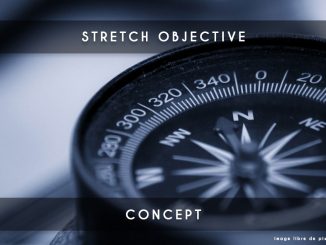
Do you know the scrumban? It’s a mix between scrum and kanban. We will see its ceremonies to better understand the scrumban.
The Scrumban also called Agile Kanban is an agile methodology that allows you to benefit from the iterative, incremental and adaptive concepts of the Scrum. It takes advantage of the kanban flow concept.
Here is my last article if you want to know more about scrumban framework.
Article : What’s the Scrumban?
Scrumban ceremonies
The Scrumban ceremonies are similar to the scrum ceremonies. But there are some differences to know.
Scrumban ceremonies: Sprint planning
– The goal: define the sprint objectives for the next two weeks.
– Duration: the necessary time to finish the sprint preparation. But it’s better not to exceed more than 30 minutes.
– The participants: the product owner (PO), the scrum master (SM) and the entire development team (developers)
– The animators: The product owner is the master of ceremonies. The scrum master will rather be the one who will assist the Product Owner to intervene in case of need
Progression:
We start the sprint by doing the sprint planning of this sprint.
During the scrum planning, the product owner will present the objectives of the sprint. The team will know what is expected by the product owner at the end of the next sprint.
Unlike the scrum, he will not purpose a sprint backlog constituted of items. Indeed, in scrumban, we use the pulled flow; so the product owner will put item in the “todo” step when it’s necessary. The notion of sprint backlog doesn’t exist in scrumban.
The development team will split each item when it arrive in the “todo” step. The team will not do that in the sprint planning.
I like to call this ceremony “sprint objectives” because in scrumban we do this ceremony to define the objectives of the next two weeks.
Scrumban ceremonies: Daily sprint
– Objective: the development team must be clear on the progress of the project and identify blocking points.
– Duration: 15 minutes maximum every day (except the day of sprint planning)
– The participants: the developer team and the scrum Mmaster (necessary if the team is not mature)
– The animators: the autonomous development team
Progression:
Each member of the development team have to:
- Explain what he has done since the last Daily
- Say what he thinks to do until the next Daily
- Raise an alert (if necessary)
Each member has only 2 minutes maximum to speak. If a problem is raised and we will probably spend time talking about it, the Scrum Master will have to propose to talk about this problem after the Daily; it’s in the objective to not disturb it.
Scrumban ceremonies: Product backlog Refinement
– Objective: content refinement of the product backlog to prepare the next Sprint.
– Duration: it doesn’t last more than one hour per session; it can also last only ten minutes if the product owner doesn’t need more time
– The participants: the development team, the product owner and the scrum master
– The animators: It’s the product owner who is the master of this ceremony. The scrum master will rather be the one who will assist the product owner to intervene if necessary
Progression:
It exists one kind of doing this ceremony but you can use others concept to do it. Here is one of this method to handle your product backlog refinement.
The product owner will purpose user-stories to developers. For each user-story:
- Developers ask questions to the product owner to refine the user-story if it’s not 100% clear for them.
- If they have fully understood the request, they validate the user-story
- Otherwise, if the developers don’t understand the user-story, the product owner have to review it until the next session.
In scrumban, it’s not necessary to estimate each user-story. But if the product owner need to know the necessary effort to do each user-story to help him to prioritize, he can purpose to the developper to do an extreme quotation (workshop to estimate a lot of user-stories in 40 minutes).
Scrumban ceremonies: Sprint Review
– Objective: review what has been achieved during the sprint. It’s also interesting to present the display in order to improve the exchange between the team and the stakeholders; this in order to get a maximum of constructive feedbacks.
– Duration: it doesn’t last more than 1 hour
– The participants: the development team, the product owner, the scrum master, the key users [optional], the stakeholders [optional] and the sponsors [optional]
– The animators: It’s the product owner (PO) who is the master of this ceremony. The scrum master (SM) will be the second animator. It is rather advisable that the PO and the SM present in pairs.
Progression:
1. The product owner presents the work done during the Sprint
2. Developers make a demo of a new feature completed
3. The scrum master presents some revealing indicators (burndown chart, burnup chart, donut impediment …) to explain concretely the progress of the project.
4. Questions / Answers and feedback.
Scrumban ceremonies: Sprint retrospective
– Objective: work on two main axes: continuous improvement and the health of the team
– Duration: one hour
– The participants: the development team, the product owner and the scrum master
– The animators: It’s the scrum master who prepares and animates at 100%
Progression:
The scrum master will purpose fun workshops to achieve the objectives of the retrospective with some golden rules:
- each retrospective must be different
- it must be animated and not monotonous
The team will work to look for of axis of improvement to apply as soon as the next sprint.
Conclusion: scrumban ceremonies
Now, you understand the difference between the Scrumban ceremonies ans the classic scrum ceremonies. There are some different notions but they are so similar.




Bonjour Monsieur Judicaël,
J’ai constaté une erreur dans la description de la 4eme cérémonies.
Il y a un doublon “Scrumban ceremonies: Product backlog Refinement” au lieu de “Scrumban ceremonies: Sprint Review”.
Bien cordialement,
Laurent
Corrigé 🙂 Merci beaucoup